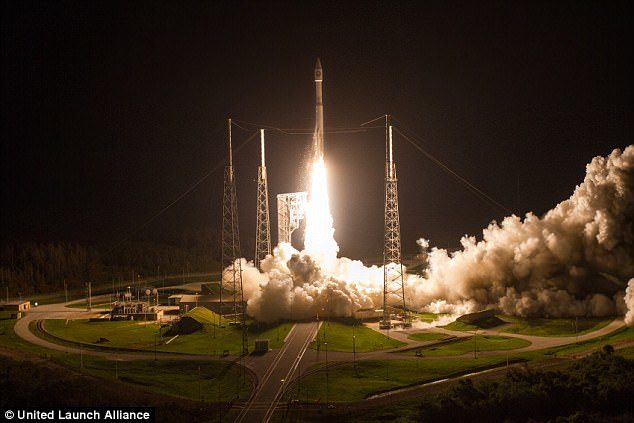
US officials have not revealed what the satellite will be doing or what its orbit will be, making it the second secret spy craft launched by the country in just three weeks.
Some have suggested it will use sensors to gather data on an enemy's electronic defence network, including radars, surface-to-air missile systems and aircraft.
The satellite, which launched at 3:28am ET (7:28 BST) yesterday, had experienced a week of delays due to poor weather and a faulty transmitter that had to be replaced.
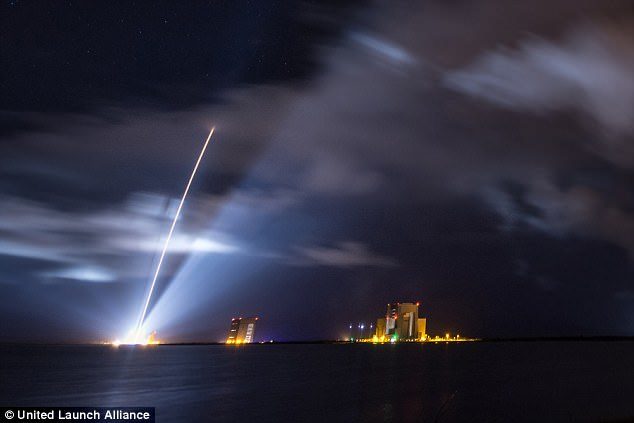
As with the NRO's previous satellite launches, the purpose of the mission and its orbit are classified.
The craft lifted off atop a United Launch Alliance (ULA) Atlas V rocket, marking the 26th mission the ULA - a joint venture of Lockheed Martin and Boeing - has provided for the NRO.
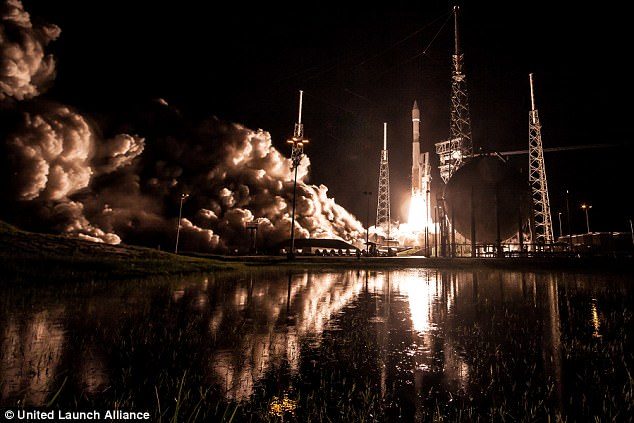
'Today's launch is a testament to the tireless dedication of the ULA team, demonstrating why ULA continues to serve as our nation's most dependable and successful launch provider,' Laura Maginnis, ULA vice president of Government Satellite Launch, said in a statement.
'After recovering from Hurricane Irma that came through the area last month, and the last week's weather challenges, the team found the right opportunity today to deliver this critical national asset to orbit.'
The launch was initially delayed two days by poor weather, and then by a further week to replace a telemetry transmitter on the rocket, officials said.
The successful liftoff marks the second spy satellite in less than a month to be launched by the NRO.
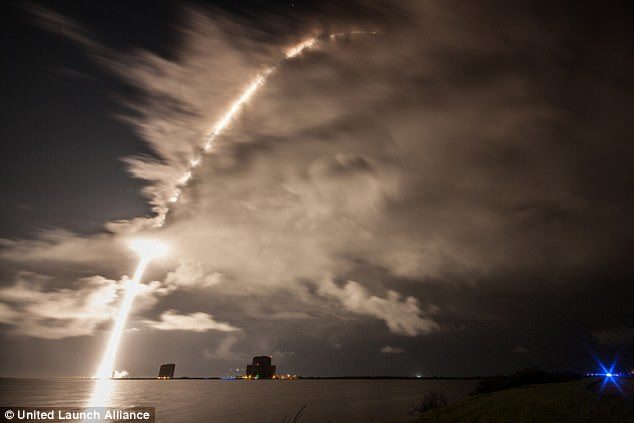
All systems were going well when a webcast of the launch of the satellite, dubbed NROL-42, concluded about three minutes into the flight.
NROL-42 and NROL-52 are the latest in a secretive fleet of craft constructed and operated by the National Reconnaissance Office (NR0).
Very little is known about the function these particular eyes in the sky perform, but spy satellites can provide a range of services.
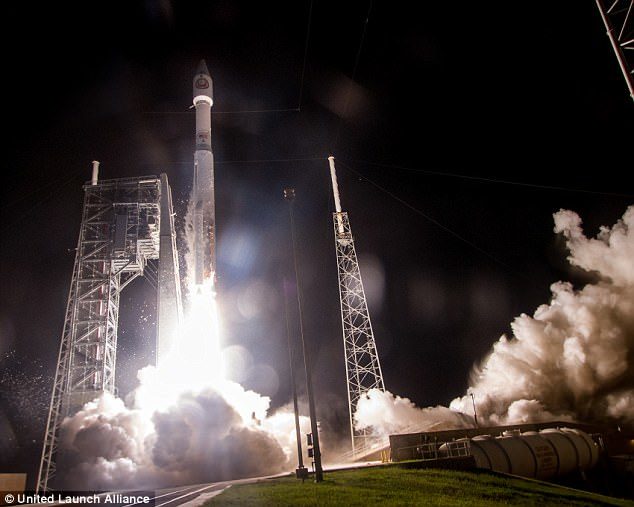
The launch took place at ULA's Space Launch Complex-3 at 10.49 pm PDT (1.49 am ET / 6.25 am BST September 24).
Speaking after the launch Laura Maginnis, ULA vice president of government satellite launch said: 'Congratulations to the entire team for overcoming multiple challenges throughout this launch campaign.
'From Hurricane Irma schedule impacts to replacing to a first stage battery this week - the team maintained a clear focus on mission success.'



Reader Comments
to our Newsletter